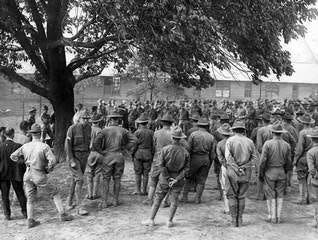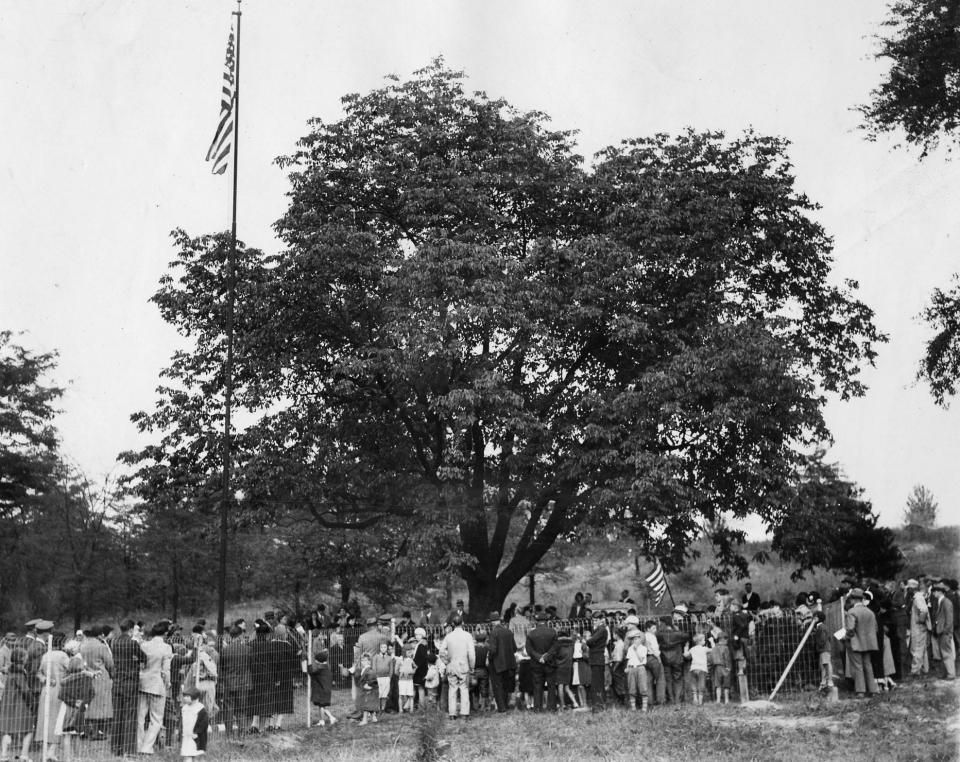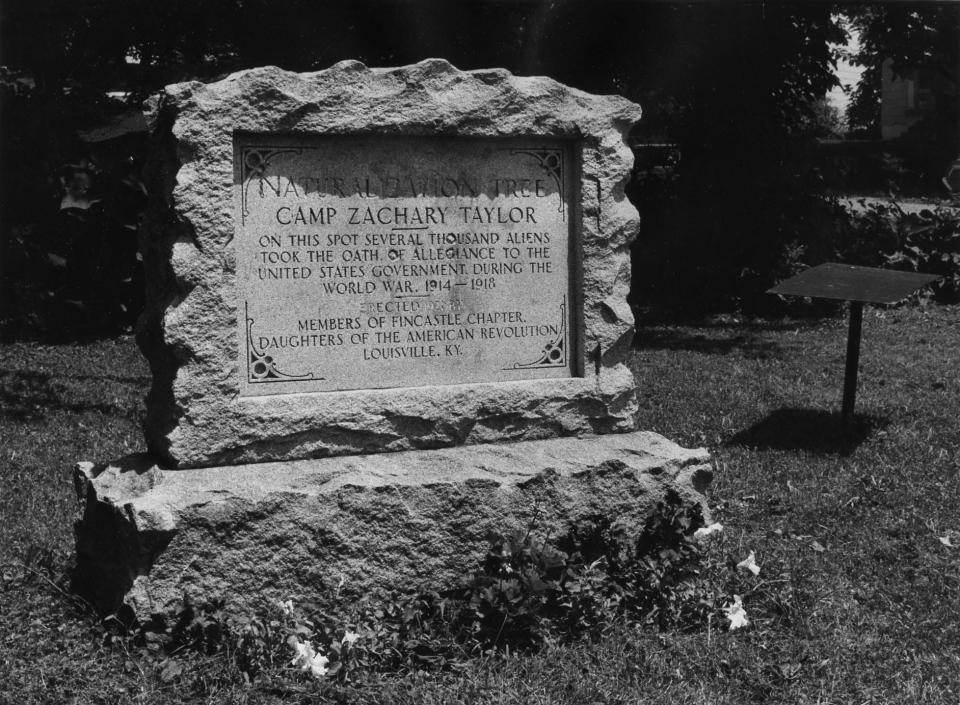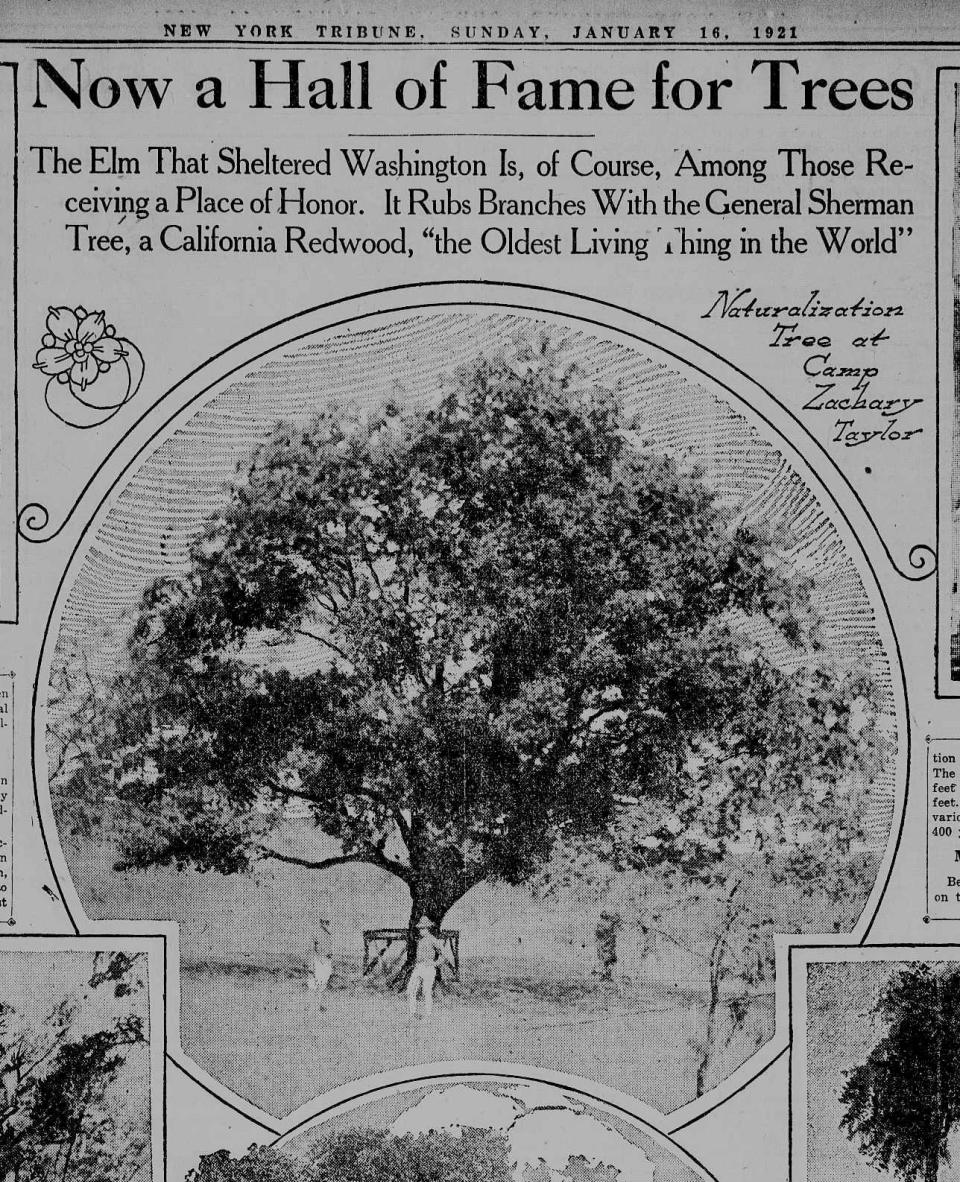Retro Louisville: The Naturalization Tree at Camp Zachary Taylor

An anecdote in a story on Page 10 of the Aug. 16, 1918, edition of the Courier Journal was the first reference to a 'naturalization tree' at Camp Zachary Taylor in Louisville.
World War I had not yet ended and Camp Zachary Taylor was one of 16 national Army camps in the United States that trained more than 125,000 soldiers, according to the Kentucky Historical Society. While the camp shut down in 2020, one prominent feature remained — the Naturalization Tree.
"Nine hundred and fifty foreigners will be naturalized to-morrow morning at Camp Zachary Taylor under the 'naturalization tree' on Lee Avenue. Judge James Cochran, of Covington, will president over the court, and Gen. Austin is invited to attend the ceremonies," the Aug. 16 paper read.
A few days later, Aug. 21, 1918, the paper said the ceremony was "the largest number of men ever taken into the arms of this country at one time at any American Cantonment. The tree was selected by the naturalization officer, Lieut. Perkins. It is one of the many objects of interest at the reservation and stands directly behind the camp laundry. When the aliens are sworn in they have a full view of the Stars and Stripes as they fly over the camp."

Following the closure of Camp Zachary Taylor, there was concern over what would happen to the tree, which had become a landmark for the city along with the soldiers stationed there and immigrants that took their citizenship under it.
"Woodman, spare that tree!" was the first paragraph of a story that appeared in the Jan. 23, 1921, edition of the Courier Journal discussing the Jefferson Post of the American Legion's efforts to save the tree.
"The tree is declared to be symbolic, as nothing else, of this country's remarkable war record of blending, in a short space of time, all the alien and diversified forces of the population into one unit - the American citizen. It represents the entrance into Camp Taylor, and into all the military camps in existence during the war, of thousands of aliens in many of whom was the feeling that they owed nothing to this country except what might be derived from it, and their emergence in a short space of time as American soldiers."

The Naturalization Tree happened to have been chosen by the American Forestry Association for inclusion in the Tree Hall of Fame in Washington, D.C., earlier that year.
"A photograph of the Naturalization Tree will hang side by side with that of the famous Washington Elm, at Cambridge, Mass., under whose branches (George) Washington took command of the Continental Army, July 3, 1775."
A few months later, word came that the tree would survive as told under a March 2, 1921, headline: "Historic tree will be saved," which included a note that the Jefferson Post of the American Legion would give up its claim to the tree so that Fincastle Chapter of the Daughters of the American Revolution could take control.

The tree would not last forever, being felled following a lightning strike in 1951.
"Camp Taylor's 'Naturalization Tree,' a 140-year-old ash commemorated by the Fincastle chapter, D.A.R., in 1921, yesterday bowed to age via surgery. Two of its huge limbs, broken in a recent windstorm, were removed after they fell into the yard adjoining its lot at the corner of Kentucky and Lee."
A monument dedicated to the tree in 1921 remains but was moved from its original site to Camp Taylor Memorial Park, near where Poplar Level Road meets the Watterson Expressway.
This article originally appeared on Louisville Courier Journal: Retro Louisville: What happened to the Naturalization Tree?

